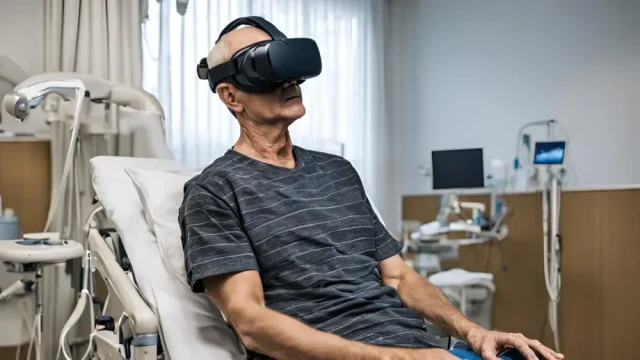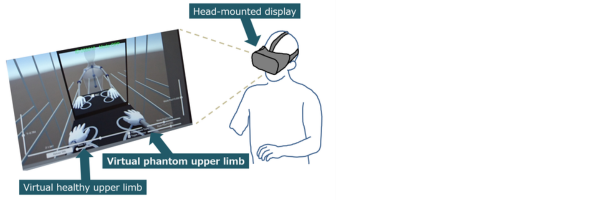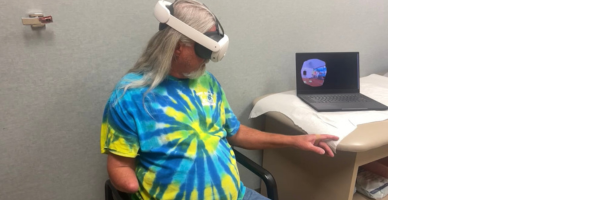
Transforming Amputee Care with Targeted Brain Rehabilitation and Cutting-Edge VR Technology
At the OrthoCarolina Reconstructive Center for Lost Limbs, we are not just dreaming of a future free from phantom limb pain—we are actively forging it. Groundbreaking Targeted Brain Rehabilitation (TBR) using Virtual Reality (VR) technology is changing the recovery outlook for amputees.
What is Phantom Limb Pain?
Phantom limb pain is a type of discomfort or pain that feels like it's coming from a body part that's no longer there. People who have had a limb amputated might still feel sensations or pain as if the limb were still present. This can happen soon after surgery or develop months or even years later.
The exact cause isn't fully understood, but it's thought to be due to mixed brain or spinal cord signals. These areas may still send messages to the missing limb, which the body interprets as pain.

Treatment options vary and can include medications, physical therapy, nerve blocks, and sometimes techniques like mirror therapy.
The Inception of TBR
Dr. Glenn Gaston and Dr. Bryan Loeffler, co-founders of the OrthoCarolina Reconstructive Center for Lost Limbs, have spearheaded an innovative approach at the OrthoCarolina Research Institute (OCRI) to treat phantom limb pain. Their work, in collaboration with the University of Georgia and other research partners, has led to the research and program development of TBR utilizing virtual reality. This method isn't about dulling the pain; it's about tackling the neurological root cause of the pain head-on.
Virtual reality is creating new opportunities for patients, such as double amputee and shark attack survivor Lulu Gribbin, who are dealing with phantom limb pain after an amputation. By immersing individuals in a virtual world where they can visualize and control their missing limbs, OrthoCarolina is not just aiming to lessen the pain; but also helping the brain heal itself.

TBR: How It Works
An individual donning a VR headset shortly after amputation surgery is immersed in a virtual world that simulates the presence of their lost limb. This innovative approach maintains the brain's limb representation, tricking the brain into believing the limb is still part of the body, and averting the onset of phantom limb pain.
Targeted Muscle Reinnervation (TMR) is a foundational surgical procedure that sets the stage for the successful management of phantom limb pain and prosthetic control. During TMR, surgeons reroute nerves from the amputated limb to intact muscles elsewhere in the body. This process allows the transferred nerves to integrate with the new muscle tissue, facilitating the generation of electrical signals during attempted contractions of the now-absent limb.

These signals are detected by surface sensors on the skin over the reinnervated muscles, occurring when the patient imagines moving the phantom limb. This crucial step occurs before options like Virtual Reality (VR) therapy can be considered, establishing a critical base for further rehabilitation strategies.

The detected signals are then converted into movements by a prosthetic limb. Advanced prosthetics leverage this data to facilitate natural and intuitive limb movements, allowing patients to manipulate the prosthetic simply by contemplating the action. TMR may also offer sensory feedback from the prosthetic to the brain by linking sensory nerves to the skin above the reinnervated muscles, enabling the detection of touch or vibration.
Through TMR, patients achieve enhanced control over their prosthetic devices, utilizing the body's existing neural pathways and residual muscles to improve the functionality and intuitiveness of the artificial limb.
The Dream Team
By combining TBR with Targeted Muscle Reinnervation (TMR) to manage residual limb pain, they've unlocked a powerful pain management strategy. It's not just about coping—it's about prevention. The early use of VR can stop phantom limb pain before it even starts, offering a new lease on life for those who have undergone limb loss.

This innovative approach is also available to individuals prior to undergoing an amputation.OrthoCarolina is proactively fitting patients with VR technology almost immediately after surgery in hopes of preventing phantom limb pain from taking hold.
The technology and work from OrthoCarolina's RCLL is a game-changer that offers a glimpse of hope; training the brain and potentially easing, or even sidestepping, the discomfort that so many amputees endure.
Discover the innovative work at the Reconstructive Center for Lost Limbs and explore how TMR, TBR, and VR are transforming the lives of amputees. Interested in supporting further advancements? Support our research and be a part of the next breakthrough.
Frequently Asked Questions
What is phantom limb pain, and why does it happen?
Phantom limb pain is discomfort that feels like it’s coming from a limb that has been amputated. It occurs when the brain and spinal cord continue sending signals to the missing limb, often due to disrupted nerve pathways or sensory memory.
Can TBR and TMR help improve prosthetic function, too?
Yes. With TMR, nerve signals from the missing limb control a prosthetic device more intuitively. VR and TBR support this process by strengthening the brain-muscle connection.
How do I know if TMR or TBR is right for me?
Talk to your surgeon about which options are best for you! They’ll consider your overall health, timing of surgery, and personal goals to determine if TMR and/or TBR could support your recovery and quality of life.
This information is provided as an educational service and is not intended to serve as medical advice. If you are seeking specific orthopedic advice or assistance, please consult with your OrthoCarolina physician or locate one in your area through OrthoCarolina’s website at www.OrthoCarolina.com.
Back




Leave a Comment